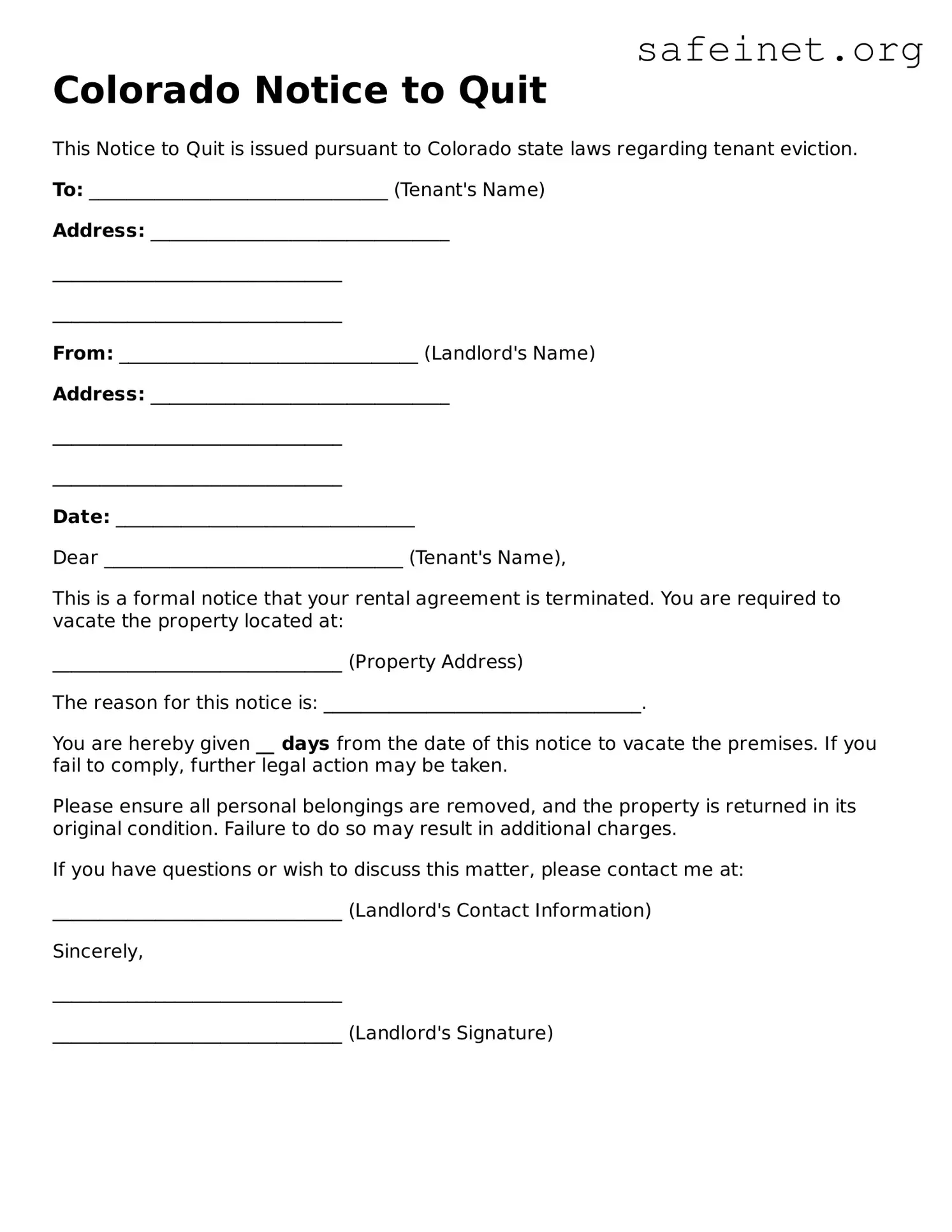Colorado Notice to Quit
This Notice to Quit is issued pursuant to Colorado state laws regarding tenant eviction.
To: ________________________________ (Tenant's Name)
Address: ________________________________
_______________________________
_______________________________
From: ________________________________ (Landlord's Name)
Address: ________________________________
_______________________________
_______________________________
Date: ________________________________
Dear ________________________________ (Tenant's Name),
This is a formal notice that your rental agreement is terminated. You are required to vacate the property located at:
_______________________________ (Property Address)
The reason for this notice is: __________________________________.
You are hereby given __ days from the date of this notice to vacate the premises. If you fail to comply, further legal action may be taken.
Please ensure all personal belongings are removed, and the property is returned in its original condition. Failure to do so may result in additional charges.
If you have questions or wish to discuss this matter, please contact me at:
_______________________________ (Landlord's Contact Information)
Sincerely,
_______________________________
_______________________________ (Landlord's Signature)
